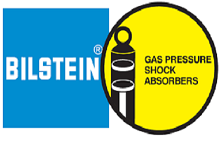
Engine oil is used to lubricate the moving parts of the engine. Lubricants reduce the likelihood of quick abrasive wear and corrosion, and wash away dirt.
Types of engine oil
According to the SAE standard, the lubricant’s name may contain one or two numbers. The first indicates the minimum operating temperature of the fluid. The second stands for the viscosity at high temperatures. The higher the number, the thicker the lubricant.
By engine type:
- for petrol engines – according to the API classification, these are marked with the letter S;
- for diesel engines – these have the letter C;
- universal oils – these can be used both in petrol and diesel engines, their marking contains both letters.
There are also several specific symbols, for example:
- SF – for engine oils that were used in passenger cars produced in the 1980s;
- SG – in commercial vehicles of the same period;
- SH – in engines manufactured after 1994;
- SL – in multi-valve turbocharged engines manufactured after 2000.
By base stock:
- Petroleum oils are produced by refining crude oil. They are inexpensive. However, they are prone to evaporation, and thickening in cold weather. Their use may lead to sludge build-up in case of engine overheating.
- Semi-synthetic oils are produced by adding synthetic additives to the petroleum base – one third of the total amount. They are frost-resistant, but gradually lose their viscosity during operation. Decomposition products can be deposited inside the engine.
- Synthetic oils are made from hydrocarbons by chemical reaction. They protect the engine from corrosion, and have a long service life, but are expensive.
- Hydrocracked oils are produced by modifying crude oil at the molecular level. They are available at a low price, but at the same time they quickly lose their properties and cannot withstand rapid temperature changes.
Operation tips
On average, the lifespan of engine oil is 10,000–15,000 km, and with a significant load on the engine can be estimated to be about 8,000–6,000 km. In addition, it is recommended to change it at least once a year, even if you haven’t used your car. Every 1,000 km, you should check the level and condition of the lubricant with the oil dipstick. When changing the oil, do not mix lubricants of different types and brands. It’s important to only use the one recommended by the car manufacturer. Never overfill your engine.
Causes and signs of engine oil degradation
- Mixing lubricants of different types and grades leads to the formation of insoluble deposits on the engine walls. You can notice this on the oil dipstick during inspection.
- Some fluids lose their properties as a result of being exposed to high or low temperatures, or antifreeze leaking into the lubrication system. You’ll notice a change in the consistency or emulsification when checking with the dipstick.
- As a result of long use, the fluid loses its properties, which is indicated by a change in its consistency and colour.
- Prolonged engine idling negatively affects the lubricant quality. The replacement interval should be reduced in this case.
How to change your engine oil
- Park the vehicle on a level surface and allow the engine to cool down for 10 minutes.
- Unscrew the drain plug of the engine oil pan.
- Drain the waste product into a prepared container.
- When changing the oil, be sure to install a new oil filter. A clogged one cannot work efficiently.
- Before installing the filter, pour about 200 ml of oil into it, and use some oil to lubricate the filter O-ring.
- First, pour in about 80% of the fluid amount prescribed by the car manufacturer. Then add the rest gradually, about 150 ml at a time, and keep checking the level with the dipstick. The top of the oil mark should be between the “Min” and “Max” lines.
- Inspect all seals and gaskets and the oil cap. Replace them if necessary.
TRUSTED CAR AND ACCESSORY BRANDS IN STOCK
















